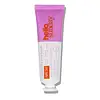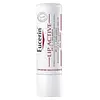What's inside
What's inside
 Key Ingredients
Key Ingredients

 Benefits
Benefits

 Concerns
Concerns

 Ingredients Side-by-side
Ingredients Side-by-side

Water
Skin ConditioningGlycerin
HumectantOctocrylene
UV AbsorberEthylhexyl Salicylate
UV AbsorberButyl Methoxydibenzoylmethane
UV AbsorberCetearyl Alcohol
EmollientOleyl Erucate
EmollientCaprylyl Caprylate/Caprate
EmollientTapioca Starch
Panthenol
Skin ConditioningEthylhexyl Stearate
EmollientSucrose Polystearate
EmollientDimethicone
EmollientDisodium Cetearyl Sulfosuccinate
CleansingHydrogenated Vegetable Glycerides
EmollientHydroxyacetophenone
AntioxidantPentaerythrityl Distearate
EmulsifyingSodium Polyacrylate
AbsorbentPhenoxyethanol
PreservativeAllantoin
Skin ConditioningParfum
MaskingTocopheryl Acetate
AntioxidantHydrogenated Polyisobutene
EmollientDisodium EDTA
Xanthan Gum
EmulsifyingSodium Hyaluronate
HumectantAloe Barbadensis Leaf Juice Powder
Skin ConditioningTocopherol
AntioxidantLinalool
PerfumingBenzyl Salicylate
PerfumingPantolactone
HumectantGeraniol
PerfumingCitronellol
PerfumingLimonene
PerfumingWater, Glycerin, Octocrylene, Ethylhexyl Salicylate, Butyl Methoxydibenzoylmethane, Cetearyl Alcohol, Oleyl Erucate, Caprylyl Caprylate/Caprate, Tapioca Starch, Panthenol, Ethylhexyl Stearate, Sucrose Polystearate, Dimethicone, Disodium Cetearyl Sulfosuccinate, Hydrogenated Vegetable Glycerides, Hydroxyacetophenone, Pentaerythrityl Distearate, Sodium Polyacrylate, Phenoxyethanol, Allantoin, Parfum, Tocopheryl Acetate, Hydrogenated Polyisobutene, Disodium EDTA, Xanthan Gum, Sodium Hyaluronate, Aloe Barbadensis Leaf Juice Powder, Tocopherol, Linalool, Benzyl Salicylate, Pantolactone, Geraniol, Citronellol, Limonene
Cera Microcristallina
Emulsion StabilisingOctyldodecanol
EmollientHydrogenated Polydecene
EmollientRicinus Communis Seed Oil
MaskingCetyl Palmitate
EmollientPolyglyceryl-3 Diisostearate
EmulsifyingPanthenol
Skin ConditioningEthylhexyl Triazone
UV AbsorberButyl Methoxydibenzoylmethane
UV AbsorberCetearyl Alcohol
EmollientBis-Diglyceryl Polyacyladipate-2
EmollientMyristyl Myristate
EmollientC20-40 Alkyl Stearate
Skin ConditioningGlycerin
HumectantCopernicia Cerifera Cera
EmollientWater
Skin ConditioningTocopheryl Acetate
AntioxidantSimmondsia Chinensis Seed Oil
EmollientButyrospermum Parkii Butter
Skin ConditioningBisabolol
MaskingCera Alba
EmollientCera Microcristallina, Octyldodecanol, Hydrogenated Polydecene, Ricinus Communis Seed Oil, Cetyl Palmitate, Polyglyceryl-3 Diisostearate, Panthenol, Ethylhexyl Triazone, Butyl Methoxydibenzoylmethane, Cetearyl Alcohol, Bis-Diglyceryl Polyacyladipate-2, Myristyl Myristate, C20-40 Alkyl Stearate, Glycerin, Copernicia Cerifera Cera, Water, Tocopheryl Acetate, Simmondsia Chinensis Seed Oil, Butyrospermum Parkii Butter, Bisabolol, Cera Alba
Ingredients Explained
These ingredients are found in both products.
Ingredients higher up in an ingredient list are typically present in a larger amount.
Also known as Avobenzone, this ingredient is a chemical sunscreen filter that provides protection in the UV-A range.
Avobenzone is globally approved and is the most commonly used UV-A filter in the world.
Studies have found that avobenzone becomes ineffective when exposed to UV light (it is not photostable; meaning that it breaks down in sunlight). Because of this, formulations that include avobenzone will usually contain stabilizers such as octocrylene.
However, some modern formulations (looking at you, EU!) are able to stabilize avobenzone by coating the molecules.
Avobenzone does not protect against the UV-B range, so it's important to check that the sunscreen you're using contains other UV filters that do!
The highest concentration of avobenzone permitted is 3% in the US, and 5% in the EU.
Learn more about Butyl MethoxydibenzoylmethaneCetearyl alcohol is a mixture of two fatty alcohols: cetyl alcohol and stearyl alcohol. It is mainly used as an emulsifier. Emulsifiers help prevent the separation of oils and products. Due to its composition, it can also be used to thicken a product or help create foam.
Cetearyl alcohol is an emollient. Emollients help soothe and hydrate the skin by trapping moisture.
Studies show Cetearyl alcohol is non-toxic and non-irritating. The FDA allows products labeled "alcohol-free" to have fatty alcohols.
This ingredient is usually derived from plant oils such as palm, vegetable, or coconut oils. There is debate on whether this ingredient will cause acne.
Due to the fatty acid base, this ingredient may not be Malassezia folliculitis safe.
Learn more about Cetearyl AlcoholGlycerin is already naturally found in your skin. It helps moisturize and protect your skin.
A study from 2016 found glycerin to be more effective as a humectant than AHAs and hyaluronic acid.
As a humectant, it helps the skin stay hydrated by pulling moisture to your skin. The low molecular weight of glycerin allows it to pull moisture into the deeper layers of your skin.
Hydrated skin improves your skin barrier; Your skin barrier helps protect against irritants and bacteria.
Glycerin has also been found to have antimicrobial and antiviral properties. Due to these properties, glycerin is often used in wound and burn treatments.
In cosmetics, glycerin is usually derived from plants such as soybean or palm. However, it can also be sourced from animals, such as tallow or animal fat.
This ingredient is organic, colorless, odorless, and non-toxic.
Glycerin is the name for this ingredient in American English. British English uses Glycerol/Glycerine.
Learn more about GlycerinPanthenol is a common ingredient that helps hydrate and soothe the skin. It is found naturally in our skin and hair.
There are two forms of panthenol: D and L.
D-panthenol is also known as dexpanthenol. Most cosmetics use dexpanthenol or a mixture of D and L-panthenol.
Panthenol is famous due to its ability to go deeper into the skin's layers. Using this ingredient has numerous pros (and no cons):
Like hyaluronic acid, panthenol is a humectant. Humectants are able to bind and hold large amounts of water to keep skin hydrated.
This ingredient works well for wound healing. It works by increasing tissue in the wound and helps close open wounds.
Once oxidized, panthenol converts to pantothenic acid. Panthothenic acid is found in all living cells.
This ingredient is also referred to as pro-vitamin B5.
Learn more about PanthenolTocopheryl Acetate is AKA Vitamin E. It is an antioxidant and protects your skin from free radicals. Free radicals damage the skin by breaking down collagen.
One study found using Tocopheryl Acetate with Vitamin C decreased the number of sunburned cells.
Tocopheryl Acetate is commonly found in both skincare and dietary supplements.
Learn more about Tocopheryl AcetateWater. It's the most common cosmetic ingredient of all. You'll usually see it at the top of ingredient lists, meaning that it makes up the largest part of the product.
So why is it so popular? Water most often acts as a solvent - this means that it helps dissolve other ingredients into the formulation.
You'll also recognize water as that liquid we all need to stay alive. If you see this, drink a glass of water. Stay hydrated!
Learn more about Water